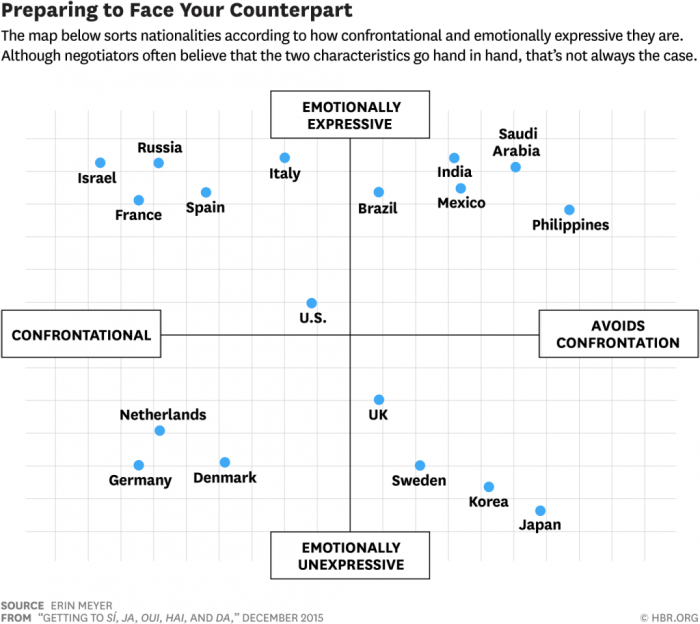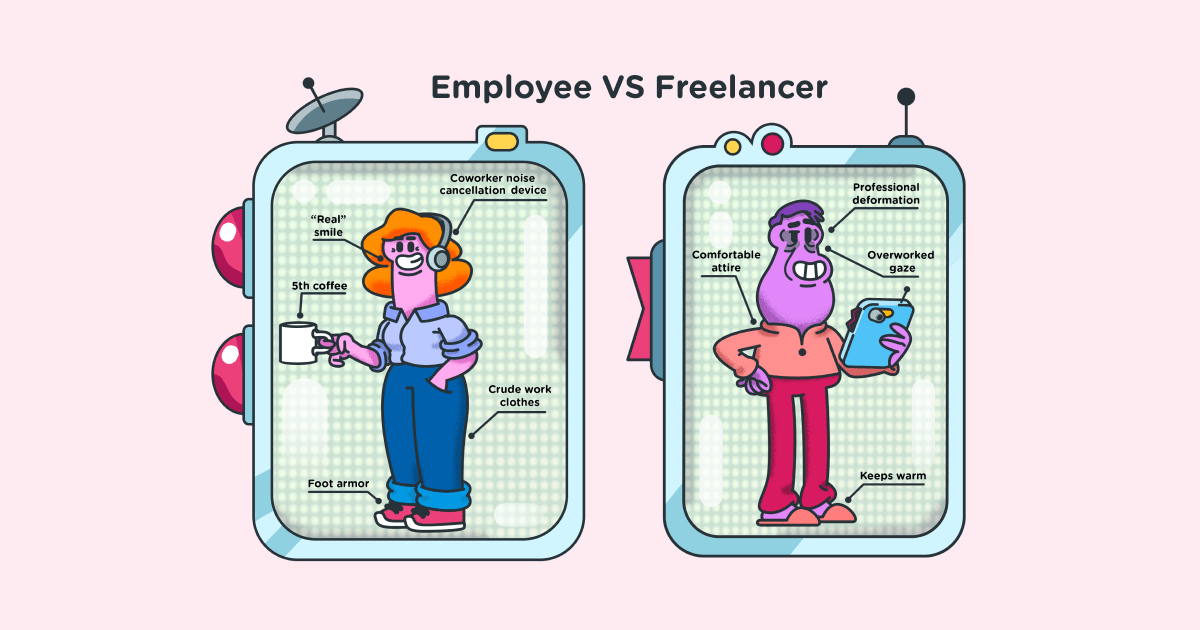How to overcome cultural and language barriers in the workplace
Last updated on: March 28, 2022
Teams whose members come from diverse races, cultures, nationalities, and religions are multicultural or cross-cultural teams. Their workplace is a multicultural workplace. When working in such a setting, there can be some cultural and language barriers among employees. This article will show you how to spot these obstacles and overcome them, which will be particularly useful if you’re managing a multicultural team. In that case, be sure to help your employees bridge cultural diversity.

Table of Contents
Cultural barriers in the workplace
According to an article published by the Pennsylvania State University, working with colleagues from distinct cultural backgrounds can help you defeat cultural barriers. Here’s why: you’ll have an opportunity to learn about other cultures, religions, and languages. So, let’s find out what cultural barriers are and how you can recognize them at the workplace.
What are cultural barriers?
Since each culture has its own set of norms, such as those regarding behavior and communication, there’s a mutual understanding among members of the same culture. Thus, cultural barriers happen when members of diverse cultures interact with each other and when each side interprets this social situation in their own way. As a result of diverse interpretations, there can even be a misunderstanding or a conflict among various cultures.
Types of cultural barriers in the workplace
Here are some of the most common types of cultural barriers in the workplace so that you can have a clearer understanding of this matter.
Employees interact with each other according to their cultural standards
Work etiquette is a term you can use to describe one’s social behavior in the workplace. These are some habits and qualities that you can associate with work etiquette along with the examples of various cultures:
Punctuality. Getting to work or for a meeting on time varies across diverse cultures. Some cultures, like the Brits, find this quality quite significant and don’t tolerate tardiness. On the other hand, in Brazil and Argentina, it’s quite common to come late for a meeting, at least half an hour after the meeting starts.
💡 Learn how to keep track of an overall employee attendance: Attendance tracking – how to track and check attendance
Greetings. When it comes to handshakes, in Singapore, they appreciate a gentle handshake that lasts around 10 seconds. In India, a handshake should be followed by greeting a person with their titles (Mr, Ms, Sir) or saying “namaste”. When it comes to Brazil, they greet each other with a firm handshake or a kiss on the cheek. Apart from handshakes, in some cultures, greeting in the workplace can involve bowing. For instance, the Japanese value bowing with your back straight while your hands are at the side.
Making eye contact. If some of your colleagues come from England, avoid making prolonged eye contact with them, because you’ll make them uncomfortable. At the same time, employees in South Africa tend to keep eye contact during the meeting. For them, this behavior proves that someone is focused during the meeting. In addition, South Africans also nod their heads for the same reason.
Handing out business cards. When it comes to British culture, they usually exchange their business cards during the initial introduction. In Singapore, it’s vital that you present your business card with both hands. If you find yourself at a meeting with Japanese businesspeople, remember not to throw your business cards or write on them. As for the Indian culture, it’s crucial not to give or receive business cards by using your left hand.
Making small talks. Having a casual conversation before the meeting or when it starts is quite common in India and the United Arab Emirates.
Dress code. In India, all employees have to follow a particular norm: men have to wear a shirt and a tie, while women are obliged to wear sarees and salwar suits. Speaking of the United Arab Emirates, it’s mandatory for women to wear a skirt or suit below the knee. On another note, companies in Denmark usually require an informal dress code.
Work-life balance. In some cultures, for instance, in Singapore, work is a priority and often, employees are expected to be responsive after work hours. At the same time, some cultures tend to keep a better work-life balance. For instance, in France, there is the Right to Disconnect Law. The French employees have the right to switch off after work and are not obliged to answer any emails they get outside the working hours.
💡 Find out more about the average working hours around the world and through history from our in-depth article: Average Working Hours (Statistical Data 2021)
Employees from some cultures can have a hard time sharing ideas openly
During a loud brainstorming session in a cross-cultural team, some employees will feel uncomfortable intervening. At the same time, others will be happy to participate and share their thoughts. Now, whether you’ll speak up depends on your personality, but also depends on your cultural patterns.
For example, Adam Goulston, the owner of the Japanese company Scize, says that his team
is composed of Asians and Westerners. In his experience, workers find it hard to communicate during the meetings:
“I found many members, of both sexes, were unprepared to express themselves freely. Even if they desired to break free from the typical meetings in which the highest-ranking person does most of the talking while others listen, they were burdened by having to talk. Some even seemed humiliated by it. Perhaps it was too impulsive or they needed more time to think or to talk with others and prepare an ideal response. The bigger the meeting, the more intense the effect.”
Goulston points out that one-on-one meetings are sometimes more effective.
“In private, a shy person can feel less burdened in opening up, and a big talker can engage me in a vocal discussion.”
In general, when it comes to expressing ideas and opinions, employees from individualistic cultures, like Australia or the United States, tend to share their viewpoints with ease. Also, in Israel, people think that each team member is equally important and they’re not afraid of disagreeing with their managers.
However, workers from hierarchical cultures, such as Japan, India, and Middle East countries, are accustomed to expressing their thoughts only after their senior coworkers have shared their points of view. The hierarchical standards mean a lot in Singapore, too. According to a Reddit user, at the meetings with clients, only senior managers are allowed to speak, while junior employees can only listen.
In addition, many Chinese people follow the rule of “thinking before speaking”, which is why they’ll have to be prepared ahead of the meeting if they have to participate.
Employees perceive personal space differently across cultures
When communicating with your colleagues, you probably won’t stand too close so that you won’t invade their privacy. But, how close is too close? Well, that depends on cultural standards.
A study published in the Washington Post shows that people in Argentina and other South American countries demand less personal space than people from Asian countries. In Romania, strangers should keep their distance.
So, let’s say your coworkers are from Japan and Brazil. You’ll be able to stay closer to your Brazilian colleagues without making them feel uncomfortable. But, you should respect the culture of your Japanese coworkers by not standing too close to them.
Employees from some cultures are less likely to disagree with others
Some cultures appreciate group harmony, which is why their members find it hard to express their disagreements. That’s because these people believe that disagreements can lead to conflicts, which disturbs group harmony. At the same time, some cultures value having a “good fight” and claim that this is a sign of trust within the culture. For instance, employees from Latin and Middle Eastern cultures usually raise their voices to reveal their arguments. However, workers from Asia and Scandinavia show their disagreement by using silence and body language. In addition, Danes are usually not afraid of disagreeing with their superiors.
Employees’ ways of negotiating vary from culture to culture
As Erin Meyer, an author of The culture map, explains in the HBR article, if you’re negotiating with partners from other cultures, you need to be aware of particular rules of negotiation.
First of all, rules of disagreements. For instance, in Russia, when someone disagrees with you, that doesn’t mean that your deal is off, but “it’s an invitation to a lively discussion”, adds Meyer. At the same time, such behavior would be a deal-breaker in Mexico. Meyer highlights that, when disagreeing, some cultures use a lot of upgraders – words like “completely” and “absolutely”. This applies to Russians, French, Germans, Israelis, and Dutch. However, some cultures use downgraders in such situations, “to soften the disagreement”. So, Mexicans, Thai, the Japanese, Peruvians, and Ghanaians use words like “partially” and “a little bit”.
An open disagreement can be interpreted as positive or negative, depending on the culture. Even people from emotionally expressive cultures, like Brazil, Mexico, and Saudi Arabia, are not that keen on getting negative comments. But, for employees in Germany, Denmark, and the Netherlands, open disagreements are considered positive, if expressed calmly. Take a look at the graph below to learn more about what country seems to be more or less emotionally expressive and ready to face confrontation.

Source: https://hbr.org/
Developing trust between two negotiating parties depends on the culture, as well. Meyer says that there are two types of trust: cognitive and affective. Cognitive trust is when you rely on someone’s skills, accomplishments, and reliability. Affective trust is a result of connecting with the other person on an emotional level. Speaking of negotiations, American culture is known for separating cognitive and affective trust. For them, mixing these two areas of trust is unprofessional. However, the Chinese are more likely to build personal connections with business partners.
If you can, try to avoid asking questions that require “yes” and “no” answers. In many cultures, like the Indonesian, it’s impolite to say “no” during face-to-face conversations. Thus, they may answer affirmatively, but later, they may inform the other party with their negative response via email. At the same time, in the French culture, saying “no” is acceptable when having face-to-face meetings. In their culture, this is a part of debating before the deal is closed.
Signing the contract. For American culture, says Meyer, signing the contract is a crucial part of negotiations. Once both parties have agreed on terms, Americans seal the deal with a contract, which is a legally binding document. But, in cultures like the Nigerian, offering a contract is a sign of mistrust. Nigerian people rely heavily on relationships so having a written contract isn’t important for them. Here’s why: in countries like Nigeria, China, and Indonesia business people prefer being flexible. For them, a contract is just the beginning of a relationship. If anything changes between two business parties, their arrangements must be modified, too.
Evaluating employees differs across cultures
Giving and receiving feedback varies from culture to culture. While individualistic cultures admire immediate feedback, even delivered in public, hierarchical cultures prefer giving and receiving feedback in a more private setting, such as a one-on-one meeting and even in an informal environment, like outside the workplace. Also, in these cultures, praising an individual instead of an entire team can even be embarrassing for that individual. Thus, giving positive feedback in front of a group can decrease employee’s performance.
How to overcome cultural barriers in the workplace?
If you’re a manager of a multicultural team, you’ll need to find a way to help both your employees and yourself overcome cultural barriers. Here’s how you can do that.
Define what cultural behaviors are acceptable for a job and a work setting
The fact is, not all behaviors specific to a particular culture will negatively impact your employee’s performance. But, showing up late for work or for meetings is a quality that shouldn’t be tolerated, regardless of one’s cultural background. If that’s the case with your workers, be sure to let them know that, even though you respect their culture, punctuality is the company’s policy.
Be willing to adapt
As I mentioned before, for some cultures, disagreeing with coworkers and especially superiors is not appropriate at the workplace, but is possible in a non-work environment. At the same time, some cultures are not accustomed to direct feedback. Therefore, as their manager, be willing to get to know more about the distinct cultural standards of your employees so that you can adapt. Thus, it will be easier both for you and your team to communicate more effectively. Plus, you’ll avoid violating cultural standards.
Organize a cross-cultural training program
The purpose of a cross-cultural training program is to educate managers on how to lead their multicultural teams with success. At the same time, employees can also benefit from attending this training program. This way, workers will learn how to act when they’re uncomfortable or if they accidentally make a colleague feel uncomfortable.
As Neal Goodman, a president of the consulting firm Global Dynamics Inc., points out in the article for SHRM:
“We all judge everybody by our own cultural lens. We have nothing else but our own cultural lens. Unless we get proper cultural training, we’re unable to see the same situation from multiple perspectives simultaneously.”
Language barriers in the workplace
In his famous metaphor, Claude Lévi-Strauss, the French anthropologist, makes a connection between myths and the communication process, or myths and language. For him, those involved in a communication process are like members of an orchestra. Even though each one of them plays a different instrument, they all use the same sheet music. The result is a soothing melody.
Now, when it comes to intercultural communication (communication between diverse cultures), the musicians from the orchestra play by using not one, but two musical notations (sheet music). As a result, there’s an unusual melody.
To understand what each culture in your team is “playing”, you’ll need to learn what language barriers are in the first place.
What are language barriers?
According to Busineestopia, a language barrier is “the inability to communicate using a language”. As a result of a language barrier, people either misunderstand or misinterpret the messages.
How often do language barriers happen within companies? Well, as stated in the research on the impact of language barrier and communication style in organizational culture, 65% of companies had the problem with language barriers, between companies’ managers/executives and other workers. When it comes to miscommunication, 67% of the respondents said that miscommunication led to inefficiency. Besides, 40% of respondents experienced difficult collaboration due to miscommunication.
Types of language barriers in the workplace
Let’s review the most common language barriers in the workplace.
Employees can’t fully understand each other due to a lack of communication skills
This issue can happen even among two employees who speak the same language. So, a person who sends the message (the sender) transfers a message to a person who receives the message (the receiver). But, there can easily be a misunderstanding.
For example, if the sender is not as specific as needed, she can ask for a report to be done by next week. The receiver doesn’t have a clear idea of what day she is referring to.
Besides, if the receiver is not an active listener, the message will be lost. Or, if the receiver hasn’t quite understood the message, but hasn’t asked for an explanation, this communication process won’t be successful.
Employees who speak a foreign language can find it hard to express themselves or understand others
Now, this one can be tricky. If your official language in the workplace is English, but for some of your colleagues English is a foreign language, this can cause a lot of confusion. Workers who are non-native English speakers can even have a high level of proficiency, but they may not always understand idioms. So, when native speakers use idioms like “don’t let the cat out of the bag”, this message can be misunderstood by non-native speakers.
Here’s an example of a dialogue that was unsuccessful due to language barriers. There was a conference call between American and Israeli managers. At one point, the Israeli manager mentioned that the R&D staff of their company “don’t care” about particular changes. Naturally, the American managers got offended by this statement, although this wasn’t the intention of the Israeli manager. The Israeli manager wanted to say that these changes wouldn’t bother the R&D staff, that they would be glad to do this job. So, this manager was supposed to say “don’t mind” instead of “don’t care”.
Employees from some cultures prefer a direct communication style
In some countries, when someone’s being too blunt, that person is considered rude. This behavior is especially not advisable when communicating with superiors. Be sure to have this in mind when talking with your business partners from other countries and cultures.
Samuel Tester, the Operations Manager in Homeland International in the UK, had a similar situation with his clients.
”Some European countries can be very direct in their communication and often Brits will perceive this as being rude. Even with these differences, I would never ask my colleagues to change the way they communicate unless there was a situation that really wasn’t acceptable.”
Tester also highlights that the world is becoming more culturally aware and situations like this will happen less often.
Employees can’t comprehend each other due to dialects differences
This is another common language barrier. In some cases, two employees speaking the same language won’t understand each other because of the dialect differences.
For instance, in India, there are 22 major languages (the official languages are Hindi and English), but there are more than 720 dialects.
Employees misunderstand each other when using slang and jargon
According to the Britannica dictionary’s definition, slang covers “unconventional words or phrases that express either something new or something old in a new way.” Slang also includes “not just words but words used in a special way in a certain social context.” The Merriam-Webster dictionary defines jargon as “the technical terminology or characteristic idiom of a special activity or group.”
As you can imagine, using slang and jargon can be a reason for misunderstanding at the workplace. Stefan Chekanov, CEO of Brosix, claims that slang, jargon, or certain symbols that are unique for a certain location tend to confuse people a lot.
“For instance, we have a lot of local clients who have their own way of speaking and international employees may often be caught off guard. For this reason, I always try to pair foreigners with local workers and prevent potential misunderstandings.”
How to overcome language barriers in the workplace?
As a manager of a cross-cultural team, you need to find a way to overcome language barriers that occur among the employees. Here are some useful tips.
Find an interpreter
To make sure that there’s a mutual understanding between you and your employees coming from various cultures, you should hire an interpreter. Or, if there’s someone on the team who speaks the language of your culturally diverse worker, be sure to use his/her help. Having an interpreter by your side is invaluable during the one-on-one meetings when you want to provide your employee with feedback, or when you need to give some instructions to your workers. Therefore, you’ll be sure that your message is understood properly. Plus, if an employee is struggling to express his opinion, the interpreter will help.
Translate all the relevant documents to the native language of your employees
To maintain a trusting relationship between you and your workers, be sure to translate all crucial documents to their native languages. You can also make these documents bilingual. In that case, the documents will include the official language of the company, along with an employee’s mother language. Of course, you don’t have to do this for every single document. But, consider translating employment contracts and similar documents.
Provide language courses for workers
All employees within the company should be fluent in the official language of the company. For those who aren’t, the company should organize language courses.
Let’s say that the official language of your company is German. If you have employees coming from France, Slovenia, and Hungary, be sure to provide them with German language courses. It will be beneficial for them to learn particular idioms, terminology that’s being used in the company, or some common phrases. Finally, they will feel more comfortable working in such an environment. Plus, they’ll be more confident with their German language knowledge.
Use visual methods
If there are some job positions that require special training and following instructions, be sure that all the written material contains visual explanations, too. In general, it will be easier for employees to gain new skills when they see graphs and pictures. This is especially handy for workers from distinct cultural backgrounds. Besides, these instructions can be useful for all employees.
Learn the native language of your employees
The best way to show that you appreciate your employees and their cultural diversity is by learning their native languages. As their manager, you should at least learn a couple of phrases you commonly use at work.
In addition, you can organize casual meetings for an entire team. Then, let your team members from diverse cultures talk about their language. They can write down several words and phrases along with their meanings.
Wrapping up
Cultural and language barriers can sometimes cause misunderstandings among the employees.
However, just because you don’t speak the same native language as your colleague or you don’t share the same cultural standards, doesn’t mean you can’t bridge these barriers. Overcoming cultural differences and establishing effective communication within the team implies being willing to adapt, but also educating yourself through cross-cultural training and language courses.




